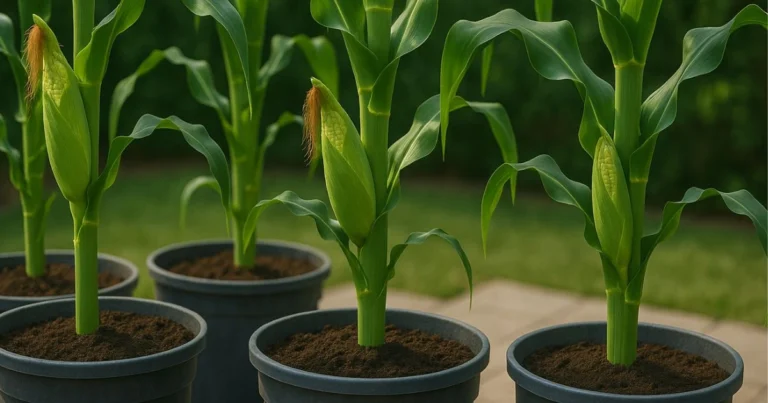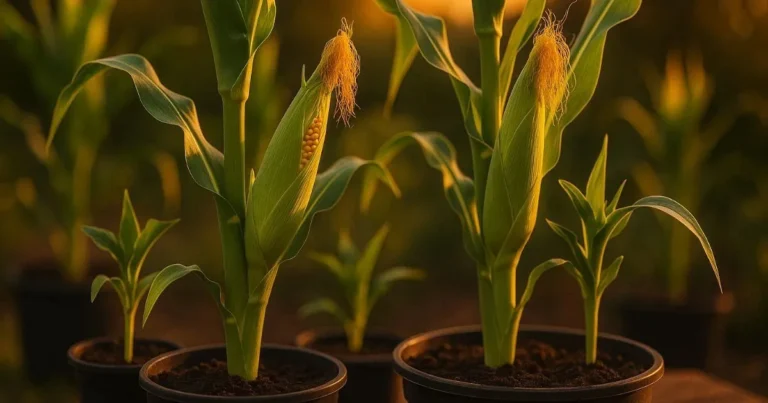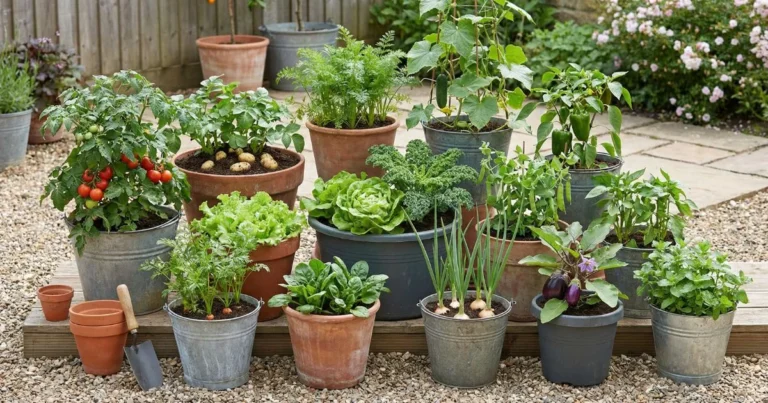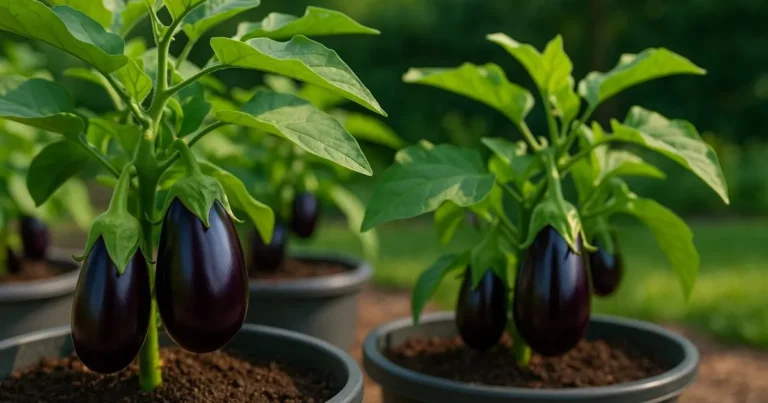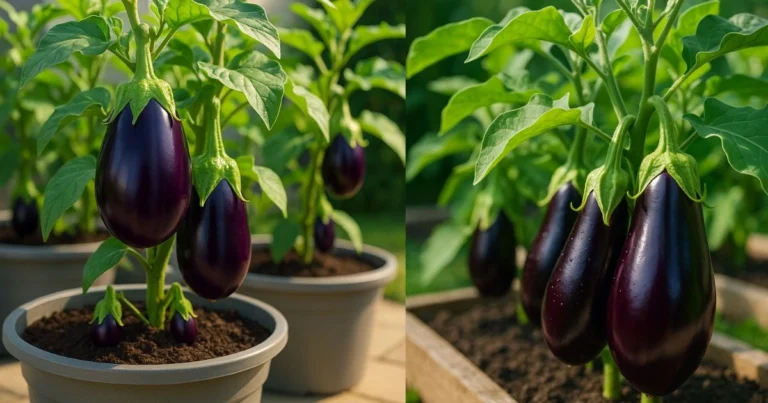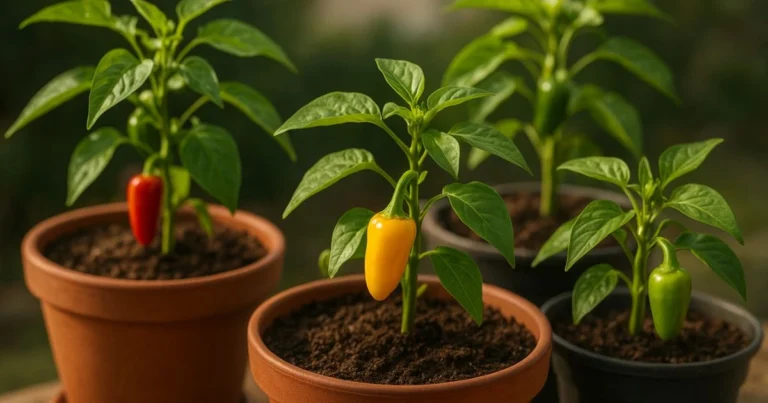Growing Bell Peppers In Containers Successfully
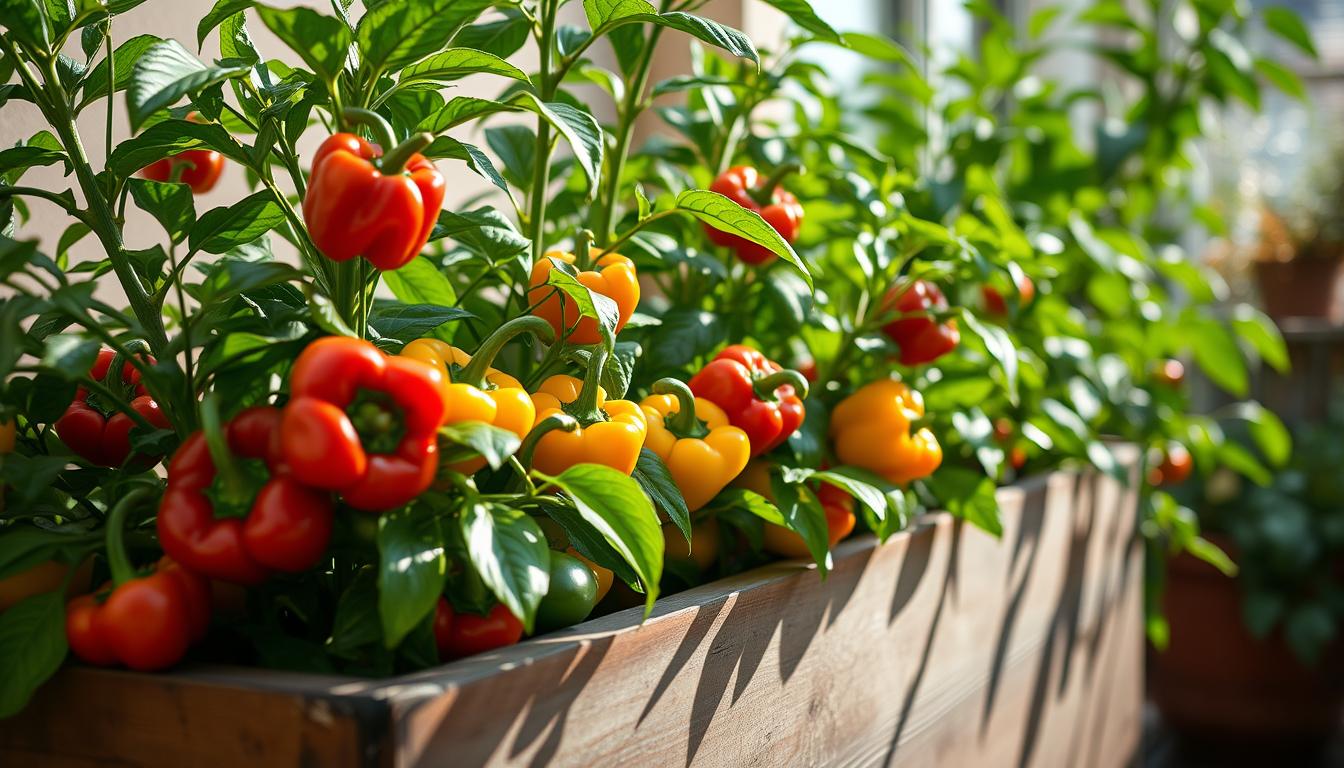
Table of Contents
Growing Bell Peppers In Containers Successfully
Gardening in small spaces just got a whole lot sweeter. Now, you can enjoy a bountiful harvest of delicious bell peppers right on your patio or balcony.
Container gardening offers a unique set of benefits. It includes improved soil quality control and reduced soil-borne diseases. When it comes to container gardening bell peppers, choosing the right container is crucial for a successful harvest.
Using the best containers for bell peppers can make all the difference. With proper care and attention, you can enjoy a thriving crop of bell peppers.
Benefits of Growing Bell Peppers in Containers
Bell peppers do well in containers, offering space efficiency and the ability to move them around. This is great for small gardens and city living.
Space Efficiency for Small Gardens and Urban Settings
Containers let you use every inch of space. You can put them on balconies, patios, or even inside. This means you can grow bell peppers in spots where regular gardening is hard.
Mobility and Protection from Weather Extremes
Containers let you move your bell pepper plants around. This helps protect them from too much sun, heavy rain, or cold. By moving them, you can keep your peppers in the best spot to grow.
Extended Growing Season Possibilities
Containers help you grow bell peppers longer by moving them to better places. You can start growing earlier in spring and keep going into fall. This way, you can enjoy your peppers for more months.
| Benefits | Description |
|---|---|
| Space Efficiency | Ideal for small gardens and urban settings |
| Mobility | Protect plants from extreme weather |
| Extended Growing Season | Move containers to optimize temperature conditions |
Selecting the Right Containers for Bell Peppers
To grow bell peppers in containers, you need the right container. Bell peppers need care, and the container is key to their growth.
Optimal Container Size and Depth Requirements
The size and depth of the container matter for bell peppers. A small container can limit the plant’s growth.
Minimum Container Dimensions
For best growth, use a container that’s at least 12 inches deep and 12-18 inches wide. This size helps the roots grow and supports the plant.
Single Plant vs. Multiple Plant Containers
While you can grow many plants in one big container, it’s better to use one plant per container. This prevents competition and reduces disease risk.
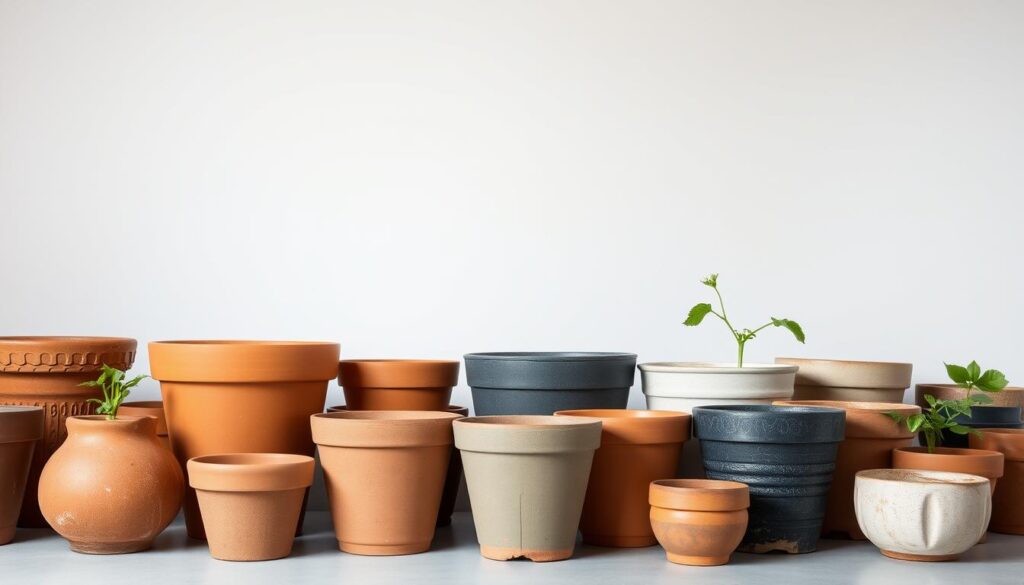
Best Container Materials for Pepper Plants
The container material affects the plant’s roots. Different materials offer different benefits.
Plastic vs. Terracotta vs. Fabric Pots
Plastic pots are light and easy to clean but can get hot. Terracotta pots are breathable but can be heavy and crack. Fabric pots are great for drainage and aeration, helping roots grow well.
Self-Watering Container Options
Self-watering containers are great for bell peppers. They keep the soil moist, reducing watering worries. These containers have a water reservoir that feeds the soil as needed.
| Container Type | Drainage | Aeration | Moisture Retention |
|---|---|---|---|
| Plastic | Poor | Poor | High |
| Terracotta | Good | Good | Medium |
| Fabric | Excellent | Excellent | Low |
Drainage Considerations for Healthy Roots
Good drainage is key to avoid waterlogged soil. Containers need enough holes for water to drain out.
“Proper drainage is key to preventing root rot and ensuring the overall health of the plant.”
Choosing the right container size, material, and drainage ensures your bell peppers thrive.
Best Bell Pepper Varieties for Container Growing
Choosing the right bell pepper variety is key for a great harvest in containers. Look for ones that are compact, yield a lot, and come in various colors. This will make your container garden look amazing.
Compact Varieties Ideal for Small Spaces
For small areas, compact bell pepper varieties are the best. They’re made to grow well in containers and give lots of fruit.
Miniature Bell Pepper Varieties
Miniature bell pepper varieties like ‘Mini Bell’ are great for small containers. They produce a lot of fruit and add color to small gardens or balconies.
Dwarf Cultivars for Containers
Dwarf cultivars, such as ‘King Arthur,’ are also great for containers. They taste like traditional bell peppers but are small enough for tight spaces.
High-Yielding Cultivars for Container Gardens
Some bell peppers are known for their high yields, perfect for small spaces. ‘California Wonder’ is a favorite because it’s productive and resistant to diseases.
Colorful Varieties to Enhance Your Container Garden
Bell peppers come in many colors, from green and red to yellow, orange, and purple. Adding colorful varieties to your garden makes it lively. Try mixing different colors for a beautiful display.
Soil Requirements and Preparation for Container Bell Peppers
Bell peppers need the right soil to grow well in containers. The right mix can make a big difference in their health and how much they produce.
Ideal Soil Composition and pH Levels
The best soil for bell peppers drains well and is full of nutrients. It should have a pH between 5.5 and 7.0. A mix that holds moisture but lets water drain is key to stop root rot and help roots grow strong.
Adding compost can make the soil better. It makes the soil more fertile and helps your pepper plants grow better.
Recommended Potting Mix Recipes
There are many ways to make the perfect potting mix. You can buy a mix or make your own.
Commercial Potting Mix Options
Many potting mixes are made just for growing vegetables. Look for ones with peat moss, vermiculite, or perlite. These help keep the mix moist and improve drainage.
DIY Potting Mix Formulas
You can make a simple mix with garden soil, compost, and perlite or vermiculite. Use 2 parts garden soil, 1 part compost, and 1 part perlite or vermiculite. This mix is great for your bell peppers.
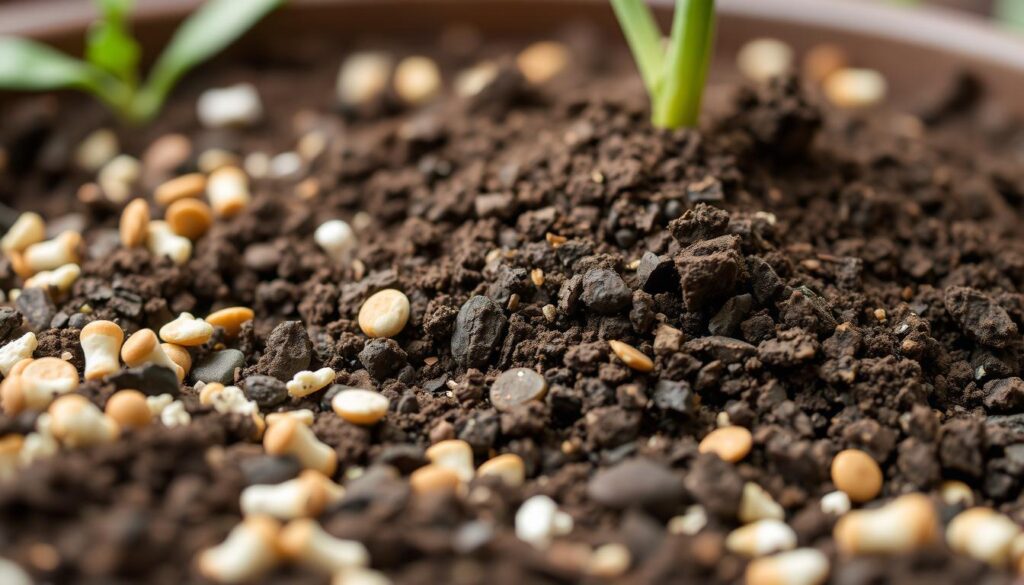
Pre-Planting Soil Amendments and Fertilizers
Adding fertilizers to your soil before planting is a good idea. Slow-release fertilizers are best because they feed the plants for a long time. Also, adding compost or well-rotted manure can make the soil more fertile and help your plants grow well.
By paying attention to these soil needs and preparation tips, you can make a perfect place for your container bell peppers to grow.
Growing Bell Peppers in Containers: Step-by-Step Process
Growing bell peppers in containers involves several key steps. These steps can lead to a bountiful harvest. Whether you start from seeds or use transplants, understanding each method is crucial for success.
Starting from Seeds vs. Transplants
When growing bell peppers, you have two main options: starting from seeds or using transplants. Starting from seeds gives you more control over the growing conditions from the start.
Seed Starting Timeline and Methods
To start bell peppers from seeds, begin indoors 8-10 weeks before the last frost date in your area. Sow seeds ¼ inch deep in a seed starting mix. Keep the soil warm until germination.
Selecting Healthy Transplants
If you prefer transplants, choose plants with deep green leaves and a sturdy stem. Avoid transplants showing signs of stress or disease.
Proper Planting Depth and Spacing
When transplanting seedlings into containers, plant them at the same depth as in their pots. Space them 12-18 inches apart for proper air circulation and growth.
Initial Care After Planting
After planting, water the bell peppers thoroughly. Keep the soil consistently moist but not waterlogged. Monitor temperature and adjust as necessary for optimal growing conditions.
By following these steps and providing the right care, you can enjoy a successful harvest of bell peppers from your containers.
Light and Temperature Requirements
For healthy bell peppers in containers, the right light and temperature are crucial. Bell peppers need specific conditions to grow well. Knowing these needs is key for a successful harvest.
Sunlight Needs for Optimal Growth
Bell peppers need plenty of sunlight to grow. They need at least 6-8 hours of direct sunlight every day. Place your containers in a spot that gets full sun most of the day. This ensures your bell peppers get enough light.
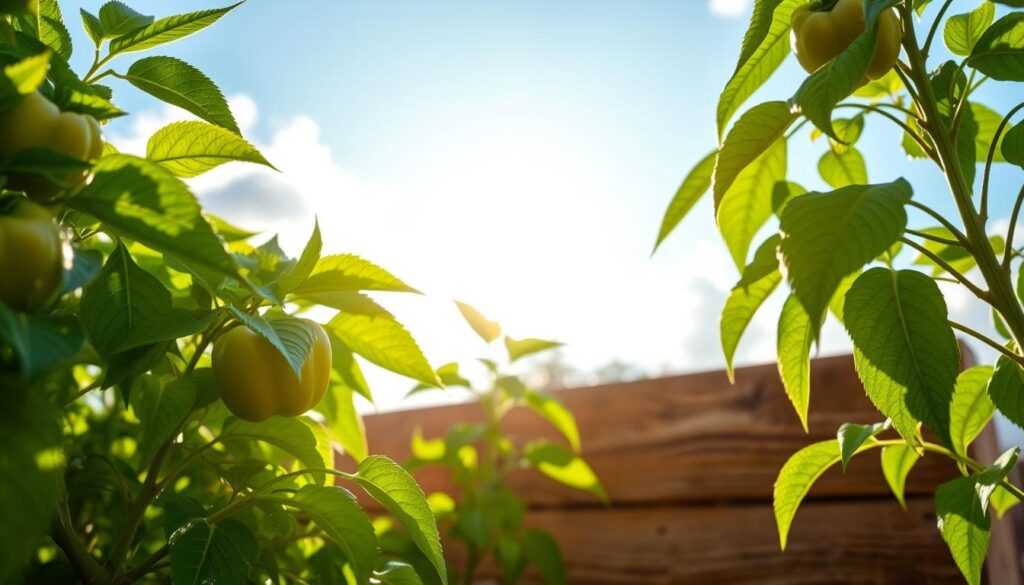
Temperature Ranges for Different Growth Stages
Temperature is important for bell pepper growth. The best temperature range is between 70°F (21°C) and 90°F (32°C).
Germination Temperature Requirements
For seeds to sprout, the soil should be around 75°F (24°C) to 85°F (29°C). This warm soil helps seeds grow quickly.
Vegetative and Fruiting Temperature Needs
During growth and fruiting, bell peppers like daytime temperatures between 70°F (21°C) and 80°F (27°C). Nighttime temperatures should be around 65°F (18°C) to 70°F (21°C).
Protecting Container Peppers from Temperature Extremes
To protect bell peppers from extreme temperatures, use different methods. In hot weather, some shade can prevent overheating. In cooler weather, cover containers or use row covers to keep temperatures stable.
| Growth Stage | Temperature Range | Sunlight Requirement |
|---|---|---|
| Germination | 75°F – 85°F | N/A |
| Vegetative | 70°F – 80°F (day) | 6-8 hours direct sunlight |
| Fruiting | 65°F – 70°F (night) | 6-8 hours direct sunlight |
Watering and Feeding Container Bell Peppers
To get a lot of bell peppers from containers, you need to water and fertilize right. Bell peppers need steady moisture, but too much water can harm them. This can cause root rot and other problems.
Watering Frequency and Techniques
Getting the watering right is key for your container bell peppers. How often you water depends on the weather and the size of the container. Water when the top inch of soil feels dry.
Signs of Water Stress
Look out for signs that your peppers might need more water. Wilting or yellow leaves mean they’re thirsty.
Watering Methods for Containers
Water your peppers well until you see water coming out of the bottom. This makes sure the soil is moist but not too wet.
Fertilizing Schedule for Maximum Yield
Use a balanced fertilizer with an N-P-K ratio of 7-7-7. Start fertilizing a week after you transplant your peppers.
Organic vs. Synthetic Fertilizer Options
Both organic and synthetic fertilizers work well. Organic choices like compost or manure tea give nutrients and make the soil better.
Seasonal Feeding Adjustments
Change your fertilizing plan with the seasons. Bell peppers grow fast, so they might need more food during this time.
Signs of Overwatering and Underwatering
Too much water can rot the roots, while too little can stress the plants. Look for yellow leaves or droopy stems to spot watering problems.
- Overwatering signs: Yellowing leaves, soft stems
- Underwatering signs: Wilting, slow growth
Learning how to water and feed your container bell peppers well will help you get a great harvest.
Supporting and Maintaining Healthy Pepper Plants
Bell pepper plants in containers need careful care to grow well. You must provide support to keep them upright and promote healthy growth.
Staking and Support Methods for Container Peppers
Small stakes or cages can support pepper plants as they grow. This prevents damage from wind or the weight of the peppers. Place stakes near the plants when they’re small, and tie the stems to the stake as they grow taller.
Pruning Techniques for Better Production
Pruning your bell pepper plants can greatly increase their yield. By removing certain parts, you direct the plant’s energy towards producing more peppers.
Topping and Pinching Methods
Topping involves removing the top growth to encourage branching. Pinching removes the tips of stems to control the plant’s shape. Both methods help create a bushier plant with more pepper-bearing branches.
Removing Suckers and Excess Foliage
Removing suckers (shoots between the main stem and a branch) and excess foliage helps the plant focus on fruit production. This can lead to larger, healthier peppers.
Container Rotation and Maintenance Tips
Rotating your containers regularly ensures even growth by exposing all sides to sunlight. This simple practice can greatly improve the health and productivity of your bell pepper plants.
Managing Pests and Diseases in Container Bell Peppers
Keeping pests and diseases under control is key to growing great bell peppers in containers. Bell peppers in containers face many pests and diseases. These can hurt your plants’ health and reduce your harvest.
Common Pests and Organic Control Methods
Aphids and spider mites are common pests of bell peppers. To fight them, try misting with water and using insecticidal soap.
Aphids, Spider Mites, and Whiteflies
Aphids, spider mites, and whiteflies suck the sap from your pepper plants. They can weaken your plants. It’s important to check your plants often and act fast to stop these pests.
Preventative Pest Management
To prevent pests, use physical barriers and introduce beneficial insects. Also, keep your garden clean.
Disease Prevention in Container Environments
Stopping diseases is very important in container gardens. Soil-borne pathogens can spread quickly in these gardens.
Fungal Issues in Container Peppers
To avoid fungal diseases, make sure your plants have good air flow. Also, don’t water them from above.
Bacterial Problems and Solutions
Bacterial diseases can be managed by removing sick plants and improving soil drainage.
Natural Remedies for Common Pepper Plant Problems
For common pepper plant issues, try using neem oil and copper-based fungicides. They can be very helpful.
| Pest/Disease | Symptoms | Control Method |
|---|---|---|
| Aphids | Curled leaves, sticky sap | Insecticidal soap |
| Spider Mites | Speckled leaves, webbing | Misting with water |
| Fungal Diseases | Leaf spots, wilting | Copper-based fungicides |
Harvesting and Enjoying Your Container-Grown Bell Peppers
Harvesting bell peppers from your container garden is a rewarding experience. With proper care, your plants have produced a bountiful harvest. Now, it’s time to enjoy the fruits of your labor.
When and How to Harvest Bell Peppers
Bell peppers are ready to harvest when they reach their full color and size. Check your plants regularly, as the peppers can change color quickly. Use scissors or a sharp knife to cut the pepper from the plant, leaving a small piece of stem attached.
Storing and Preserving Your Harvest
To keep your bell peppers fresh, store them in the refrigerator. They can be used in many dishes, like stir-fries and salads. You can also preserve them by freezing or pickling. Freezing involves blanching the peppers before placing them in airtight containers.
End-of-Season Container Care
After harvesting, it’s essential to care for your containers for the next growing season. Remove any dead plant material, and clean the containers thoroughly. This will help prevent disease and pests from affecting your next crop.
Conclusion
Follow the steps in this guide to grow bell peppers in containers. You’ll enjoy a big harvest, even in small or urban gardens. The secret is to pick the right container, soil, and variety.
Also, make sure your plants get enough light, water, and nutrients. This will help them thrive.
Remember, choose compact bell pepper varieties and use a well-draining potting mix. Keep your plants in the best growing conditions. These tips will help you grow delicious and healthy bell peppers.
Container gardening lets you move plants and protect them from bad weather. This way, you can grow bell peppers all season long. Growing bell peppers in containers makes your garden beautiful and productive. It brings joy and freshness to your home.

